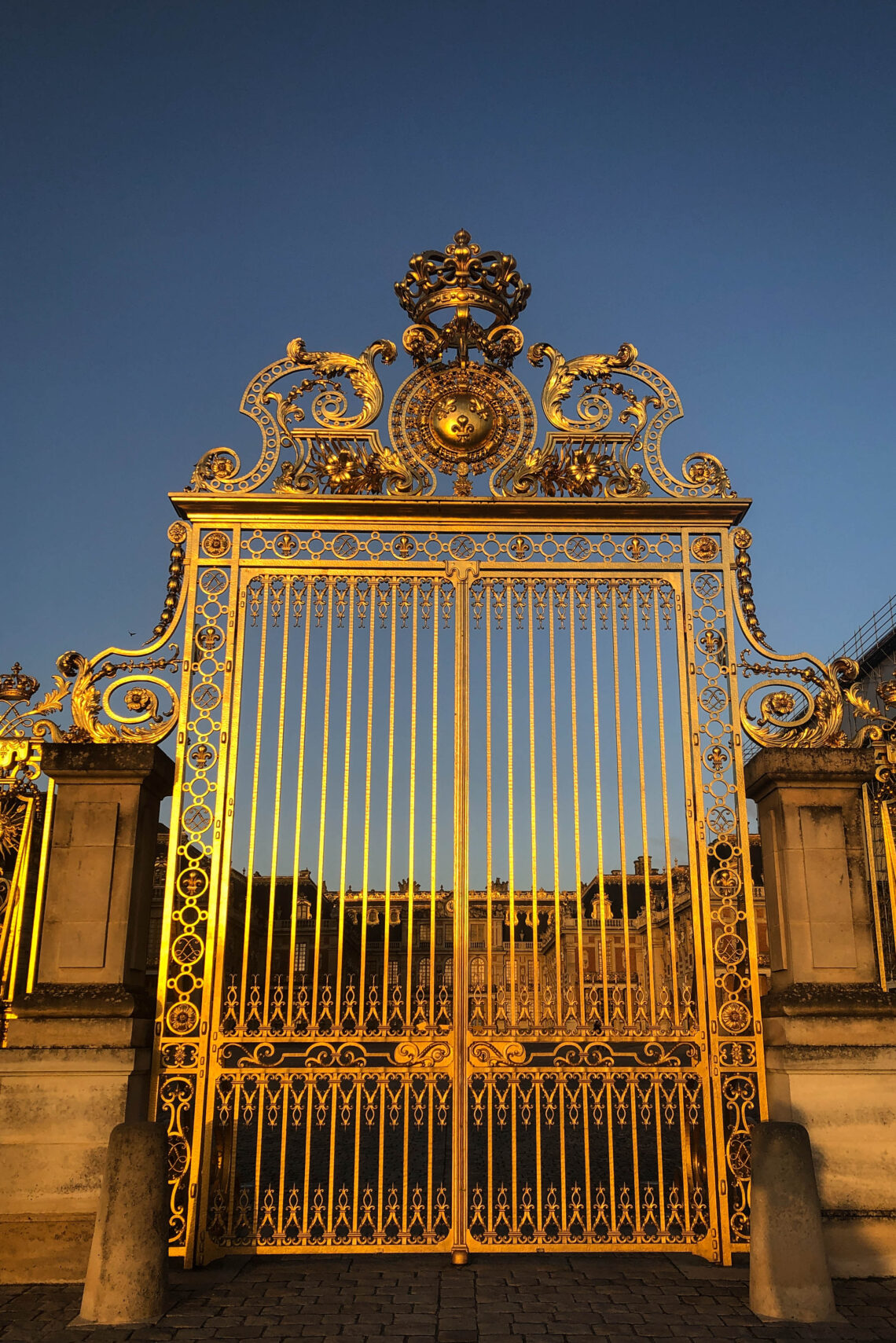
Versailles
Possibly still the most venerable symbol of total power.
I was here in May or June of 1989, and the palace was closed, so only was able to explore the gardens. Yesterday I did all the interiors, and I mean all–that were accessible. Six hours and about that many miles, with one very luckily sunny day. Raining again this morning. But, I arrived at the gates just as the sun was clearing the horizon, and hitting the statue of Louis XIV on a horse, his arm up. The Sun King saluting the sun.
Entering the main palace, I went through the wing with the king’s apartments, each of which he dedicated to a Greek or Roman god. The view from here to another wing, with a tiny fraction of the gardens, gives an idea how big the main palace is.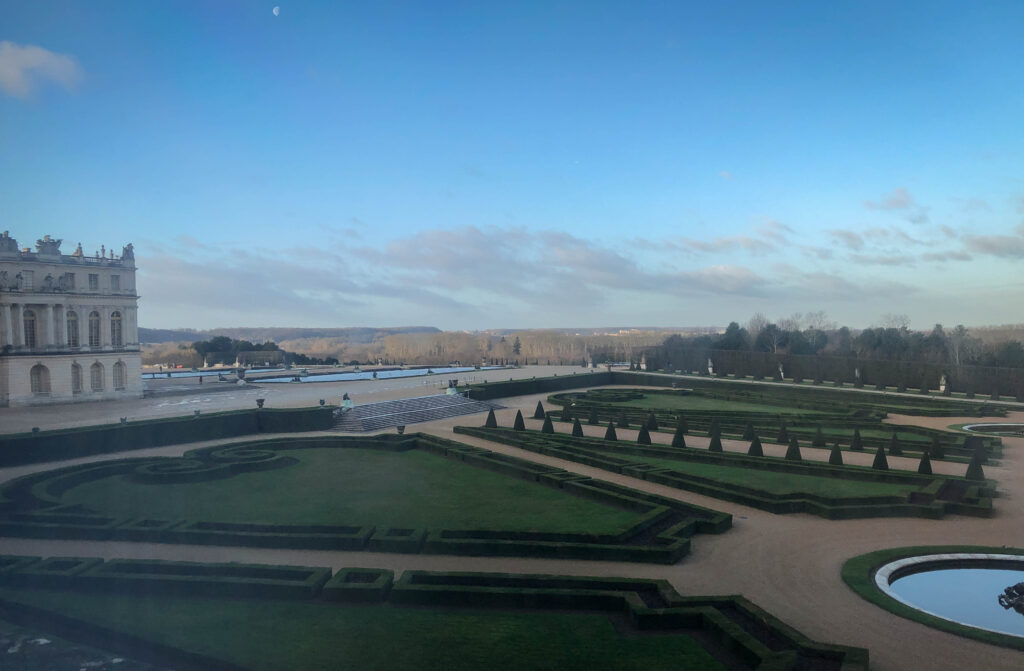 Then came the famous Hall of Mirrors, with the view out over the Grand Canal that still astonishes me, as it gives an idea how enormous the park is, extending even further than the reach of the furthest water.
Then came the famous Hall of Mirrors, with the view out over the Grand Canal that still astonishes me, as it gives an idea how enormous the park is, extending even further than the reach of the furthest water.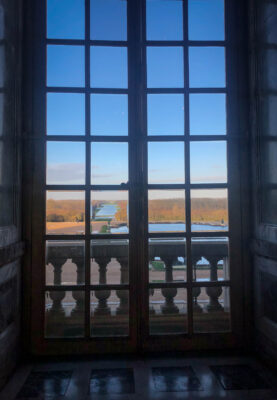
But I am going to focus mainly on Marie-Antoinette’s apartments, which are still kept as she had them, I guess, in her honor. She was not the wife of the Sun King, of course, but two kings later, who famously was decapitated as was she. Napoléon later installed himself and his wife Empress Josephine. He put plenty of paintings and statues of himself in there, to stress how he continued in the French royal tradition of dominance. In the marble hall below, the major donors since the 1930s are engraved, and I happened to stop at the most recent. Click on the thumbnail. A British company is clearly at least as enamoured with the The Divine Right to Rule.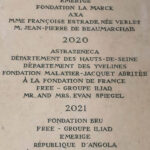
Anyway, then came the Queen’s apartments. Unlike the King’s apartments, where they said he didn’t really sleep, they said she did sleep in hers. And entertained her lady friends in her bedroom. 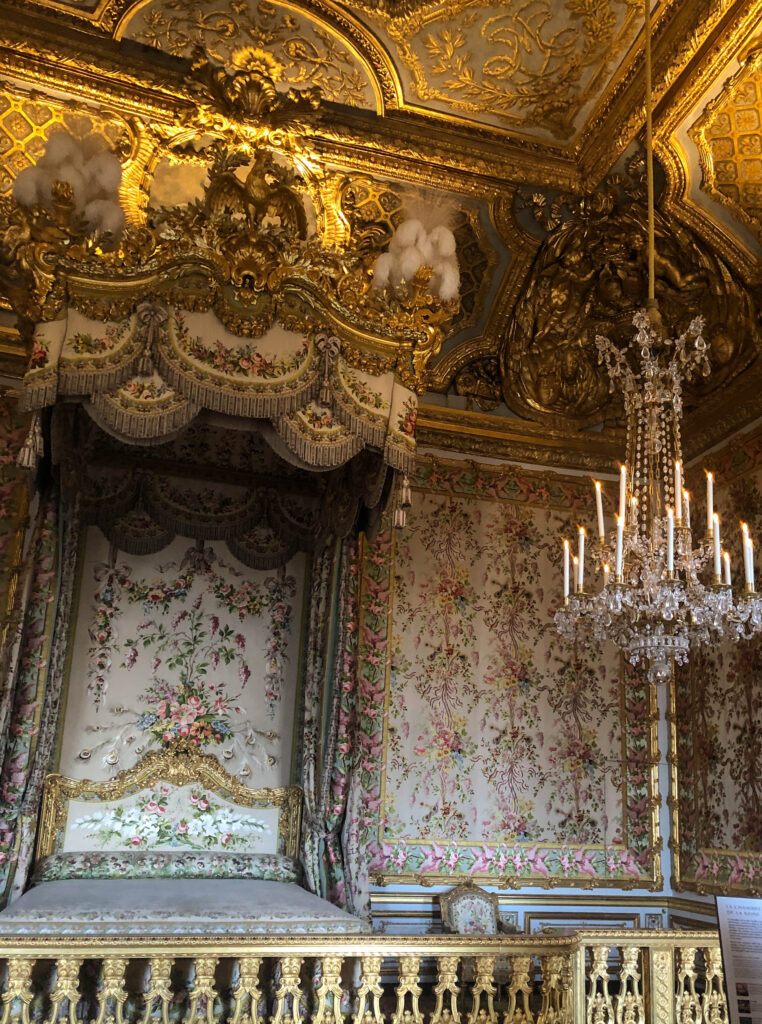
So then I walked out and down to the canal, past some funny little fake and regimented ‘woods’ that had a network of paths where you could try to get away from the court. To gossip, naturally.
Down at the Grand Canal I had a very indifferent ham sandwich, with butter and pickles, like the traditional. Then struck out for the Trianon, with some directions from a very gallant older gentleman with an Italian accent (in French).
It seemed evident that the main reason for building the Trianon was not comfort in scale but a way to get away from the huge group of nasty nobles who were forced to live in the Palace. I heard that the king made the most powerful and threatening nobles come out into the country to live with him, to keep his enemies close, and out of Paris.
But then off to the Petit Trianon.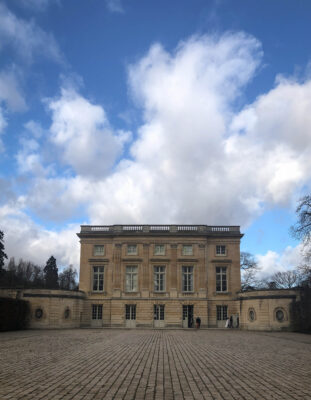 This was not, in fact built at the orders of Marie-Antoinette, though it is now associated with her. It felt quite small, and thus perhaps especially free from intrigue. It is situated in a way that discourages direct access from the Palace, and so feels even further away than it is. I liked it. The interiors are almost entirely painted in a pastel green with white accents, which I loved. I think it was Marie-Antoinette who chose it, as they have done her bedroom as it was, and it is that color too. She seemed very Germanic in her love of simplicity and outdoorsiness.
This was not, in fact built at the orders of Marie-Antoinette, though it is now associated with her. It felt quite small, and thus perhaps especially free from intrigue. It is situated in a way that discourages direct access from the Palace, and so feels even further away than it is. I liked it. The interiors are almost entirely painted in a pastel green with white accents, which I loved. I think it was Marie-Antoinette who chose it, as they have done her bedroom as it was, and it is that color too. She seemed very Germanic in her love of simplicity and outdoorsiness. 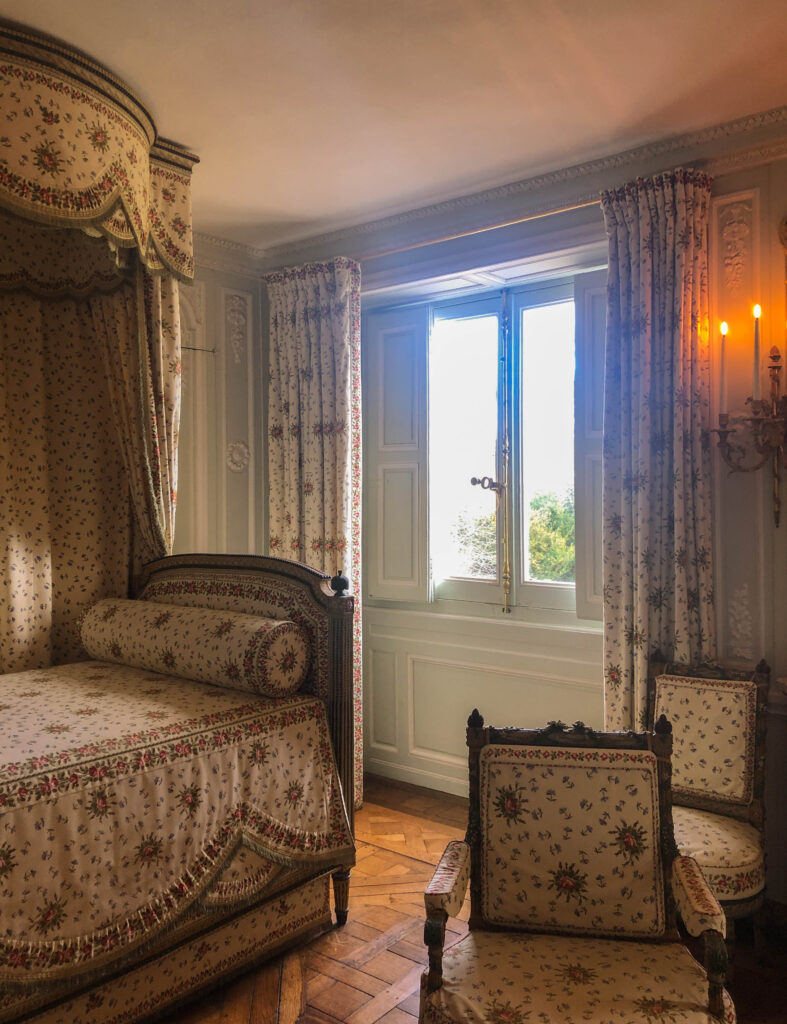
Then I got to wander along an artificial waterway out to a ‘folly’ or a copy of a little round Roman temple. I crossed the water and passed amongst beautiful specimen trees for a distance, to the Hameau de la Reine. The Queen’s Hamlet. I imagined it causing a sensation at the time she ordered it built. Her husband, Louis XVI, must have really liked her to approve of it, even if they did not have the most romantic of relationships. A lot of space is sculpted to look like the countryside, and dotted with several humble buildings, like a laiterie, which makes and serves milk products, (cheeses and ice cream, which they say the queen really liked), and every building had a charming potagerie, or vegetable garden.
The building where the queen lived was marked, and was, of course, the biggest. But just behind and to the side, with a tiny potagerie of its own, was a little house called le boudoir. Yes, just The Boudoir. And I think I know why she had yet a third bedroom. Even with this much privacy, and the feeling of being away from all things remotely royal, even in the relatively small country house… there was still staff. But not, I’ll bet, in le boudoir.
Yes, these are thatched-roofs, and planted with tulips that are sprouting. You can’t go inside, but it says the interiors are nicer than indicated by the exteriors.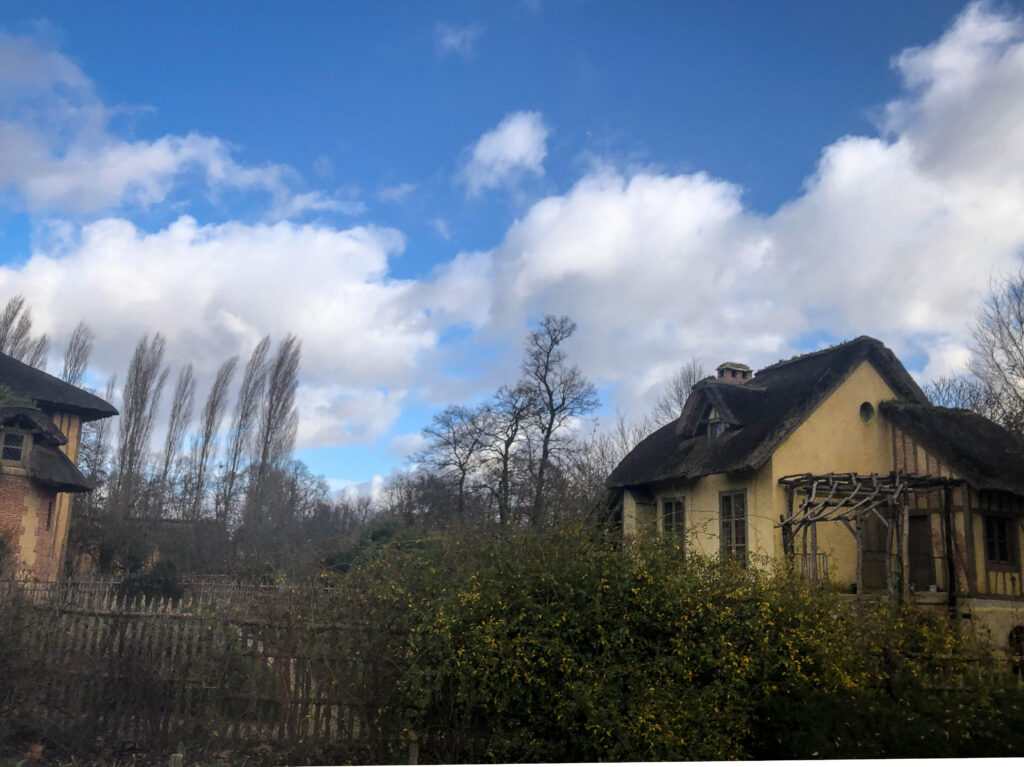
So in the boudoir she could finally have true privacy. And why did she want to sleep in such total privacy, more than even a minor aristocrat would have, hein? Speculation about her lesbian affairs aside, I mean. It dovetails so nicely with my point about vernacular architecture. She was the sister, I think, of the Holy Roman Emperor, so hardly had grown up anywhere near vernacular architecture, though she undoubtedly saw it in Austria. Maybe she went through as a girl, in her royal coach, and looked out the window and wished she could be there, like in St. Ursanne. It feels good to the soul.

